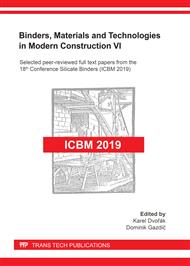p.119
p.125
p.131
p.141
p.149
p.157
p.165
p.171
p.177
Factors Influencing Mullite Formation in Refractory Grog
Abstract:
The mineral mullite has many outstanding refractory properties. The content of aluminum oxide in the raw material is the basic factor influencing the content of mullite in the final product. Depending on Al2O3 content, silica-alumina materials can be divided into fireclay and high-alumina with the Al2O3 content of 45 % and more. The study describes the influence of raw material, the influence of homogenization of raw material and influence of firing temperature on the mullite formation in fireclay refractory material. Three kinds of refractory clay with different chemical composition were used as raw material for fireclay grog production. Three kinds of homogenization and three different temperatures were studied as factors influencing mullite formation. Powder X-ray diffraction was used to determine mullite content in material. Quantitative phase analysis was conducted by the Rietveld method. Mullite crystals morphology was observed by scanning electron microscopy.
Info:
Periodical:
Pages:
149-155
Citation:
Online since:
July 2021
Authors:
Keywords:
Price:
Сopyright:
© 2021 Trans Tech Publications Ltd. All Rights Reserved
Share:
Citation:


